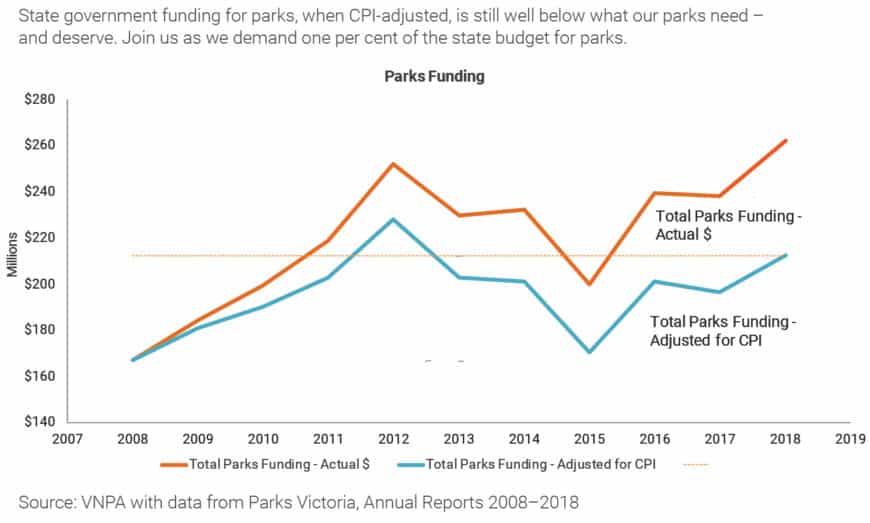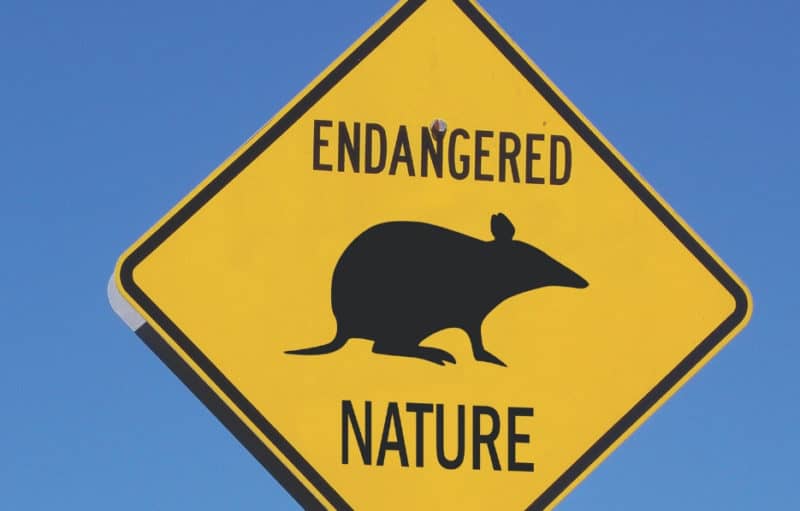PARK WATCH June 2019 |
Nature is facing unprecedented pressure – and our national parks are the foundation of efforts to protect it. VNPA Executive Director Matt Ruchel explains the value of parks and the impact of insufficient funding.
National parks and conservation reserves protect areas of significance from some damaging activities; but to be truly effective they also need active management, to combat the multitude of weeds and pest animals such as deer, pigs, foxes, cats, and to manage visitors. The management issues are often complex, so we are advocating for our national parks to be managed by a well-resourced team of the very best scientists and land managers. It’s what your great natural heritage needs – and deserves. The numbers illustrate this:
- Victoria’s parks network contains 4,728 of the state’s 5,145 native plant species (91.9 per cent) and 1,102 of its 1,405 native animal species (78.4 per cent).
- Around 70 per cent of the Victorian coastline is managed as national or state parks, coastal reserves, or marine national parks or sanctuaries. These areas protect against storm damage, flooding and erosion.
- More than one million hectares of our water catchments are located within Victoria’s national parks. The market value of water run-off supplied through just nine Victorian national parks is estimated at $244 million per year.
- The Victorian parks network is a major carbon sink, with at least 270 million tonnes of carbon stored in land-based parks and 850,000 tonnes in marine parks.
- The 50 million visits to national, state and metropolitan parks see tourists spending $2.1 billion per year, and generating 20,000 jobs. Of course, this must be managed carefully.
- So we need to ensure our parks are properly protected and managed.
The key to this is to ensure that there is appropriate funding from the government to do the job.
Currently, Parks Victoria manages 18 per cent of Victoria and approximately five per cent of our marine waters – yet it receives less than 0.5 per cent of state government expenditure.
To put this into context, state health expenditure is about 28 per cent and spending on education about 24 per cent. Of course, we are not questioning the funding of these essential services. This is not a question of ‘or’ – it is an ‘and’.
The Victorian National Parks Association is calling for a doubling in parks funding. Increasing funding for parks to one per cent of state expenditure is essential, and would enable our great natural areas to be properly protected.
Parks funding has been something of a political football, and while total funding is now slightly higher than 2012 levels in raw terms, if CPI adjusted it is well below the 2012 peak by around $40 million per annum. There are increases planned for in the forward estimates of the state budget which, in raw terms, would be close to its 2012 funding peak. A further $60–70 million in (mostly) infrastructure funding is planned for in the 2019–20 state budget.
While this all helps, it is insufficient.
In the face of climate change and rapid population growth, greater funding is essential. That is why we are calling for parks to get at least one per cent of state expenditure.
If you believe our parks and reserves need – and deserve – at least one per cent of the state budget to properly maintain and protect them, if you want national parks your grandchildren will be proud of, please join with us in demanding ‘1% for parks’.
Did you like reading this article? Want to be kept up to date about this and other nature issues in Victoria? Subscribe to our email updates.
You can also receive our print magazine Park Watch four times a year by becoming a member. Find out more here.

